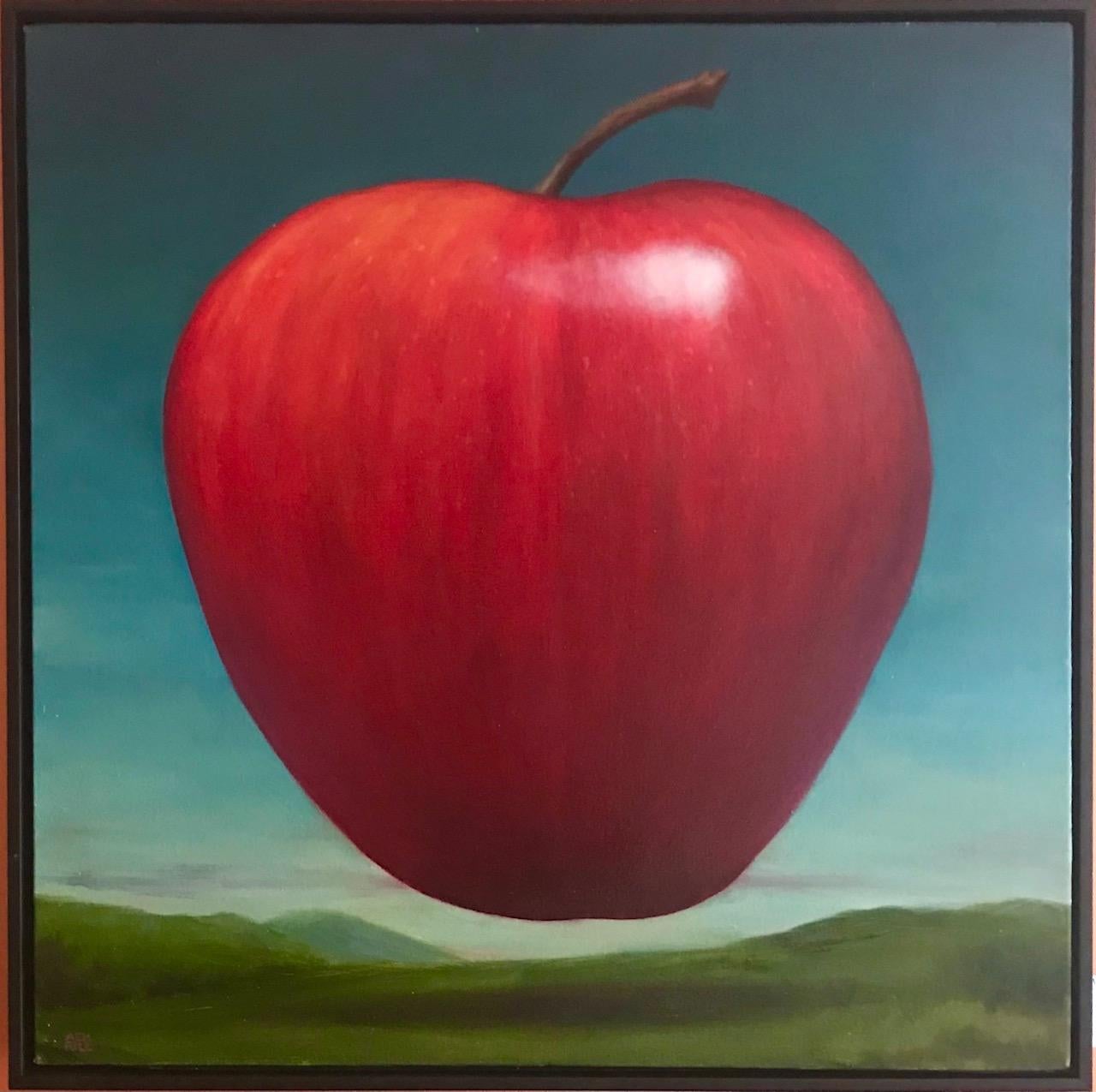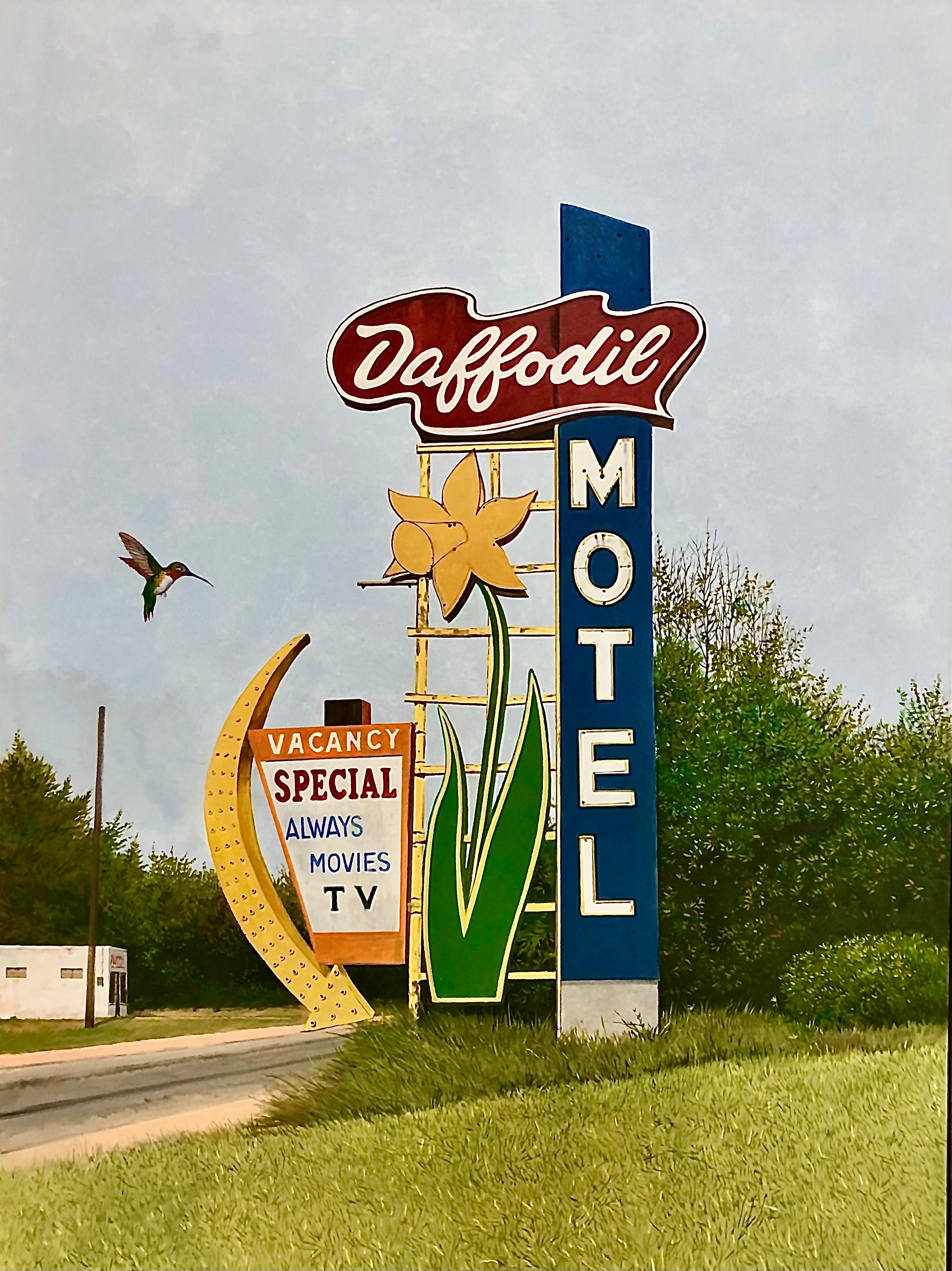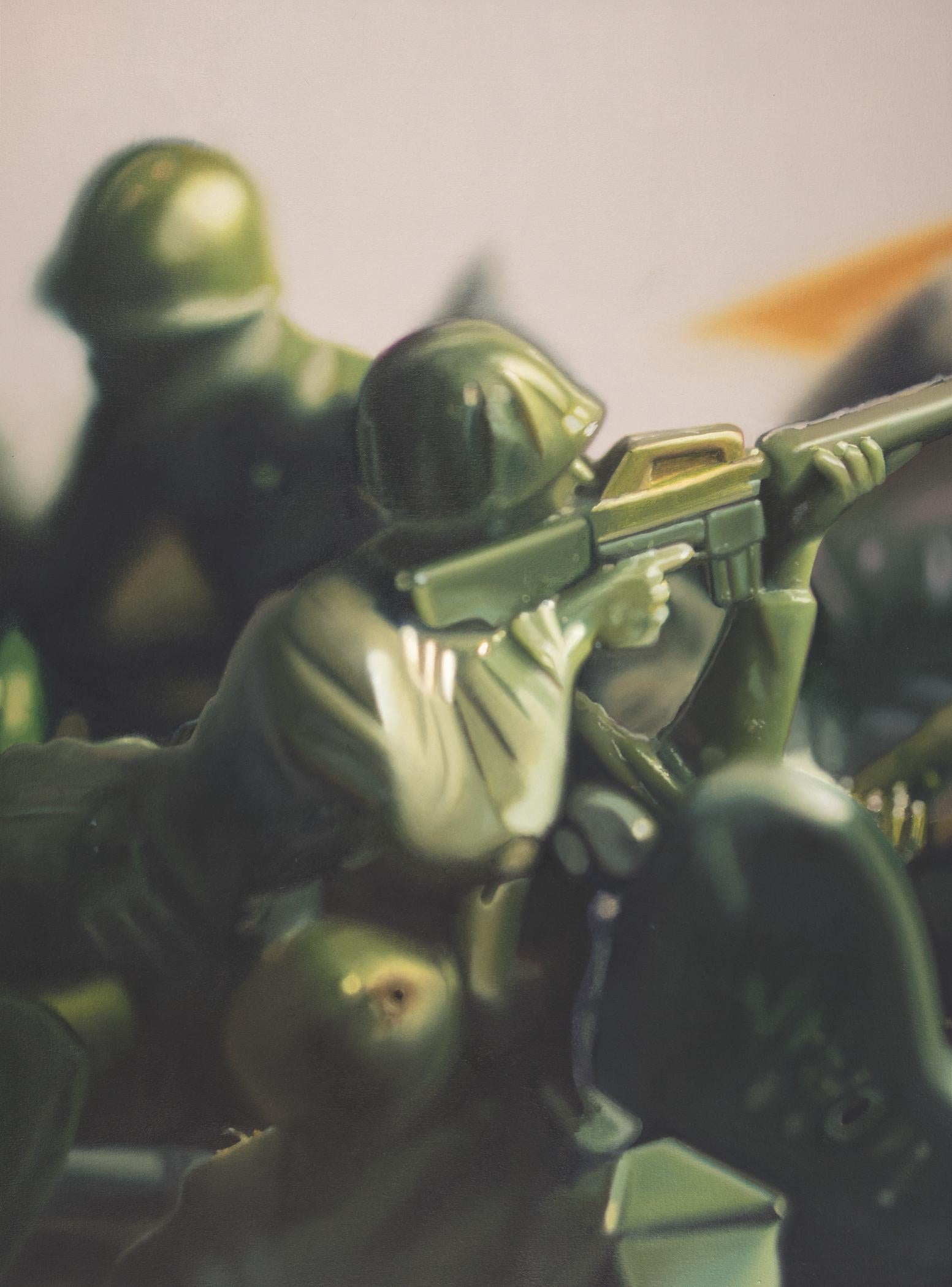Items Similar to Yellow Calla Lily
Want more images or videos?
Request additional images or videos from the seller
1 of 8
Clarence Holbrook CarterYellow Calla Lily1931
1931
About the Item
In his long and productive career, Clarence Holbrook Carter followed an independent course. He incorporated an unlikely mixture of stylistic influences, drawing from such disparate sources as regionalism and surrealism without strictly cohering to any one school. An experimentalist in the truest sense, Carter produced an oeuvre that defies categorization. He attempted nearly every variety of subject, from genre to still life, landscape to portrait, abstract to magic realist. In this sense, his career reflects the changing currents of twentieth century modernity, in which artists struggled to find an appropriate means of self-expression.
Carter was born in Portsmouth, Ohio, in 1904. He showed an early talent for the arts, taking watercolor classes at the age of nine, followed by cartooning classes at thirteen. In 1923, he enrolled at the Cleveland Institute of Art, Ohio, from which he graduated four years later. Carter then set for Europe, where he spent a year traveling to Italy, Sicily, Tunisia, Switzerland, France, England, and Belgium, and spent a summer studying at the Hans Hoffman Summer School in Capri. In 1929, he returned to Cleveland, where the following year he began teaching at the Cleveland Museum of Art. In 1938, Carter was made Assistant Professor at the Carnegie Institute of Technology in Pittsburgh, Pennsylvania, where he taught until 1944.
From the 1920s through the 1940s, Carter painted prolifically and enjoyed considerable success, exhibiting frequently, including several shows at the Metropolitan Museum of Art, New York, from 1940-42. His style was widely interpreted as Regionalist, since his paintings often represented scenes of ordinary American life. Farmers, fruit stands, street scenes, and factories all appear in works of this period. Paintings such as Trapeze Artists, formerly at Hirschl & Adler (1933; see Hirschl & Adler Galleries, Inc., New York, 1989, Clarence H. Carter: Early Works, no. 2 illus. in color), display an interest in the playful innocence of the rural Ohio lifestyle. However, the real-life scenes and places depicted in his paintings from this period, by their straightforward representation, are often laid bare for the viewer to contemplate their inner mysteries.
Beginning in the early 1950s, Carter began painting in a surrealist mode, in which he pursued ideas about time, death, and spirituality in a series of works, called the Projectives. These canvases are constructions of images, reminiscent of collage, in which a variety of disjunctive elements appear together to form elusive, mysterious narratives. By the 1960s, Carter had begun his most well-known paintings, characterized by the incorporation of ovoid shapes, including the Transections, Eschatos, and Mandala series. To Carter, the ovoid symbolizes a transection, or a bridge between life and death. “The shape of the egg affirms life, but biological life in time passes away, becoming spirit. The ovoid becomes simply a void. In death shape remains only in silence — eternal, all encompassing silence” (Clarence Carter, as quoted in Linda Weintraub, “The Egg Symbol in the Work of Clarence Carter,” in Center of the Arts, Muhlenberg College, Allentown Pennsylvania, 1978, Clarence H. Carter, n.p.). Carter remained occupied with these ideas until the end of his life.
Because of the wide range of Carter’s career, critics have had a difficult time placing his work in an art-historical context. Carter perhaps summed it best himself:
My credo is simple and changeable. I may not change radically but if I wish to I have no preconceived theories to hold me back. I feel that theories tend to make an artist academic no matter how advanced and radical these theories appear to be at the present time. My paintings at various times have been termed cubist, surrealist, neo-romanticist, realist, and even oriental, but at no time did I ever follow any school. I have painted my world as I have seen it and felt it (Carter, as quoted in Monroe A. Denton, Jr., “Some notes on Clarence Carter,” in Center for the Arts, Muhlenberg College, op. cit., n.p.).
- Creator:Clarence Holbrook Carter (1904-2000, American)
- Creation Year:1931
- Dimensions:Height: 24.4 in (61.98 cm)Width: 18 in (45.72 cm)Depth: 1.5 in (3.81 cm)
- Medium:
- Movement & Style:
- Period:
- Condition:
- Gallery Location:New York, NY
- Reference Number:
About the Seller
5.0
Recognized Seller
These prestigious sellers are industry leaders and represent the highest echelon for item quality and design.
Established in 1952
1stDibs seller since 2010
32 sales on 1stDibs
Typical response time: 12 hours
Associations
Art Dealers Association of America
- ShippingRetrieving quote...Ships From: New York, NY
- Return PolicyThis item cannot be returned.
More From This SellerView All
- Mt. Etna from TaorminaBy Thomas FransioliLocated in New York, NYThomas Fransioli, born in 1906 in Seattle, Washington, trained as an architect at the University of Pennsylvania. He worked as an architect before his service in World War II. Largel...Category
20th Century American Realist Landscape Paintings
MaterialsCanvas, Oil
- Strawberries Strewn on a Forest FloorBy William Mason BrownLocated in New York, NYWilliam Mason Brown was born in Troy, New York, where he studied for several years with local artists, including the leading portraitist there, Abel Buel Moore. In 1850, he moved to ...Category
19th Century American Realist Landscape Paintings
MaterialsCanvas, Oil
- Still Life with PeachesBy Lilly Martin SpencerLocated in New York, NYLilly Martin Spencer was a professional artist for over sixty years, painting portraits, still lifes, miniatures, and genre scenes. In the 1850s to mid-1860s her genre scenes depicti...Category
19th Century American Realist Still-life Paintings
MaterialsCanvas, Oil
- Hydrangeas and Other Garden FlowersBy John Ross KeyLocated in New York, NYSigned (at lower right): John Ross Key 1882Category
Late 19th Century American Realist Still-life Paintings
MaterialsCanvas, Oil
- Still Life with ApplesBy William Rickarby MillerLocated in New York, NYSigned and dated (at lower left): W. R. Miller 1891; (at lower right): No. 10Category
Late 19th Century American Realist Still-life Paintings
MaterialsCanvas, Oil
- Golden Rod and other WildflowersBy John Ross KeyLocated in New York, NYSigned (at lower right): John Ross Key 1882Category
Late 19th Century American Realist Still-life Paintings
MaterialsCanvas, Oil
You May Also Like
- Anthony Ackrill - Enlightened Apple, Surrealist PaintingBy Anthony AckrillLocated in Saint Augustine, FLAnthony Ackrill applies his classical training at Florence Academy of Art to create still life studies which are both realistic and dramatic. Enlightened Apple is a perfect example ...Category
21st Century and Contemporary American Realist Still-life Paintings
MaterialsOil, Canvas
- Contemporary Oil of Antique, Rustic Porcelain Christian/Catholic Virgin MaryLocated in Fort Worth, TXMother Mary, 2017 John Hartley discovered his life's passion while growing up in Piqua, Ohio. Encouraged to develop his talents in an academic environme...Category
2010s American Realist Still-life Paintings
MaterialsAcrylic, Canvas, Oil
- Contemporary American Nostalgic Sign of MoonLite Drive-In Theatre in West TexasLocated in Fort Worth, TXMoonlite, 2021, Daniel Blagg, Oil on canvas, 38 x 58" By meticulously depicting forgotten road signs and roadside debris, Daniel Blagg invites his viewers to re-consider objects th...Category
2010s American Realist Landscape Paintings
MaterialsCanvas, Acrylic, Oil
- Large, Retro, Oil Painting on CanvasLocated in Fort Worth, TXDaffodil, Daniel Blagg, Oil on Canvas, 42 x 54", 2019 A well-known figure of the contemporary Fort Worth art scene, Daniel Blagg has worked in the DFW ar...Category
2010s American Realist Landscape Paintings
MaterialsCanvas, Oil
- Contemporary American Nostalgia Sign of Chinese Restaurant w/ Blue SkyLocated in Fort Worth, TXChinese Restaurant, 2009, Daniel Blagg, Oil on canvas, 80 x 60" By meticulously depicting forgotten road signs and roadside debris, Daniel Blagg invites...Category
2010s American Realist Landscape Paintings
MaterialsCanvas, Acrylic, Oil
- Contemporary Green Army Men; Vintage/Antique Collectable Toy Soldiers in BattleLocated in Fort Worth, TXSightline, 2017 John Hartley discovered his life's passion while growing up in Piqua, Ohio. Encouraged to develop his talents in an academic environment...Category
2010s American Realist Still-life Paintings
MaterialsAcrylic, Canvas, Oil





